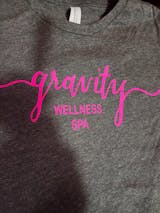Updated By Teckwrap Craft On February 22, 2025
8 Ways How To Remove Vinyl From Shirt

Table Of Contents
- What Are The Different Methods To Remove HTV?
- Method 1: Using An Iron
- Method 2: Using Heat Gun Or Hairdryer For Removing Vinyl
- Method 3: Using Rubbing Alcohol
- Method 4: Using Commercial HTV Remover
- Method 5: Pouring Acetone
- Method 6: Using Goo Gone
- Method 7: Rubbing Petroleum Jelly
- Method 8: Using The Washing Machine Dryer
- What To Avoid When Removing Heat Transfer Vinyl Design From A Shirt?
- What Are The Popular Heat Transfer Vinyl Design Removers?
- Frequently Asked Questions
Do you want to remove cracked vinyl from your shirt? Did you make a mistake while working with HTV and want to fix it? You can remove heat transfer vinyl from a shirt using commercial products that dissolve adhesive, by applying heat with an iron or a hair dryer, or by using simple items available at home like rubbing alcohol and petroleum jelly. In this blog, we present a detailed guide on how you can easily remove an HTV design from your shirt at home using everyday supplies.
What Are The Different Methods To Remove HTV?
We have compiled 8 different methods for you that will help in removing the vinyl from shirt. Before using them, it is important to take into account the type of fabric you are working on. If it is 100% cotton, you can use most of the available methods. However, if your fabric is polyester then it is best to avoid heat-based methods to remove HTV as it gets scorched easily.

Method 1: Using An Iron
For cotton fabrics, using a hot iron is the easiest and quickest way to remove HTV, but this method could also be the trickiest:
- Setting The Iron: Set your iron to the hottest temperature possible. To avoid burning your shirt, you can refer to the temperature guide.
- Applying Heat: Pull the shirt tight over the iron with the underside of the decal on its hot plate. The heat of the iron will loosen the
adhesive of the heat transfer vinyl so it can be removed easily. - Peeling The Vinyl: When you see that the vinyl is starting to separate from the fabric and looks wrinkled, you can start peeling it off from the edges using a tweezer.
- Final Cleanup: Wash the shirt and put it in the dryer exposing it to high temperature to remove adhesive residue.

Method 2: Using Heat Gun Or Hairdryer For Removing Vinyl
This is also an effective method of removing heat transfer vinyl from a shirt. Here are the steps to follow when using a blow dryer or a heat gun to remove the HTV design:
- Preparing the Shirt: Place cardboard or a towel inside the shirt and place it flat on an ironing board. This way you will not get any adhesive marks on the backside of your garment. Your decal should face up.
- Set High Heat: Set your heat gun or the blow dryer to the hottest temperature possible and position it closest to the shirt without touching the vinyl. Move it back and forth.
- Peeling The Vinyl: After 30 seconds, the decal will start to peel off. You can use tweezers to remove it.
- Final Wash: When the whole HTV design is removed, wash the shirt to get rid of adhesive residue as mentioned in the method above.

Method 3: Using Rubbing Alcohol
Rubbing alcohol can also be used to remove the HTV decal however, it may not be as effective as a vinyl remover. This is a more cost-effective solution to removing vinyl from a shirt. Here’s what you can do:
- Preparing The T-Shirt:Turn the t-shirt inside out and hold the backside of the decal over a sink or basin.
- Applying Alcohol: Gently pour alcohol over it or you can use a wet towel soaked in alcohol and wipe with it.
- Tugging The Fabric: Using your hands, tug and pull the fabric around the decal to loosen it.
- Patience Pays Off: The decal may not easily separate from the fabric, so be patient. You can soak the decal with alcohol again if necessary and continue to tug and pull. This might be a bit time-consuming.
- Removing Vinyl Pieces: Once you see that the edges of the vinyl design are coming off, use a tweezer to remove the pieces.
- Dealing with Adhesive Residue: To remove adhesive residue, rub petroleum jelly on the stiff areas and scrub a little.
- Final Step: Finally, wash the shirt immediately with a detergent to remove the petroleum jelly stain.

Method 4: Using Commercial HTV Remover
Commercial vinyl removers are effective in dissolving the adhesive backing after which you can peel or scrape the design off easily. However, one must note that these produce unpleasant fumes so you should work in a well-ventilated place, keep all sources of ignition far away, and use gloves when using them. It is best to read the instructions mentioned on the remover, however, here’s the general method:
- Prepare The T-Shirt: Turn the T-shirt inside out. Locate the backside of the vinyl design which often feels stiffer and is visible through the fabric.
- Applying Vinyl Remover: Apply a substantial amount of vinyl remover to this side. Make sure that the backside of the whole design is covered with the chemical.
- Loosening The Vinyl: While the vinyl remover is doing its work, keep tugging or pulling the area of the decal gently with your hands. This will cause the vinyl to loosen up and leave its place.
- Removing The Vinyl: When you see that the edges are slowly detaching from the fabric, gradually pull off large portions of the decal using a tweezer.
- Cleaning Up: After you have removed the whole design, it's time to clean the solvent and possible adhesive residue. To remove the residue, apply some vinyl remover on a rag and rub the area of the design with it. It will be cleaned and won't feel stiff.
- Final Wash: Finally, wash the shirt thoroughly with hot water to remove the solvent.

Method 5: Pouring Acetone
Acetone, also known as nail polish remover, is a chemical solvent that is safe to use on the shirt to remove an HTV design. The procedure is similar to that of rubbing alcohol.
- Applying Remover: Pour a generous amount of remover on a small cotton ball and dab the back side of your heat transfer vinyl decal with it.
- Peeling The Vinyl: When the vinyl loosens, pull off the piece with the tweezer. Remove the whole design like this.
- Cleaning Up: You can remove adhesive residue by washing the shirt or using petroleum jelly on the affected area.

Method 6: Using Goo Gone
Goo Gone contains toxic chemicals that can quickly and effectively remove the HTV design from fabrics. Handling it carefully is important.
When using Goo Gone, it is advisable to work in a well-ventilated space. It is also advisable to wear gloves and goggles for eye protection. Here are the steps:
- Preparing The Workspace: Cover your working table with a large plastic trash bag or tablecloth.
- Heating The Vinyl: Apply heat to your HTV design with an iron to warm it up.
- Applying Goo Gone: Now turn the shirt inside out and spray the back of the decal with Goo Gone. Let it sit for 30 seconds to a minute.
- Peeling The Vinyl: Once the decal separates from the fabric, you can use tweezers to peel it off.
- Rinsing And Washing: Rinse the shirt in a sink to remove the chemical and vinyl residue before washing it properly in a machine.

Method 7: Rubbing Petroleum Jelly
This might be the most time-consuming method that requires a lot of work and it may not be as effective and efficient in removing an HTV design. This is how you can use petroleum jelly:
- Preparing The Shirt: Turn the shirt inside out. Place a piece of cardboard inside the shirt to lay it flat. Also, we do not want petroleum jelly stains on the backside of the shirt.
- Applying Petroleum Jelly: Get a spoonful of petroleum jelly and rub it in a circular motion at the back of the
decal using your hand. Mix a few drops of liquid laundry detergent with it. - Peeling The Vinyl: You will start seeing the clumping of adhesive. When this happens, use tweezers to remove the HTV design from the front of the shirt.
- Rinsing With Hot Water: To clean the adhesive residue, you have to rinse it with hot water. Repeat the process until the adhesive is completely removed.
- Final Wash: As soon as you are done removing HTV, wash the shirt right away with a detergent to clean the oily patch left on it.

Method 8: Using The Washing Machine Dryer
This is best for correcting any mistake you made during the initial application of the HTV design. The dryer is also good for getting rid of adhesive residue. Here are the steps:
- Applying Goo Gone: Turn the shirt inside out and apply Goo Gone to the backside of the vinyl design. Let it sit for 30 seconds.
- Washing With Hot Water: Wash the shirt in the machine with hot water and a strong detergent. The heat will help remove the heat transfer vinyl design from the shirt by making its adhesive weak.
- Using The Dryer: As soon as the washing cycle ends, place it in the dryer using the hottest setting. The high heat and the movement of your shirt in the dryer will loosen your vinyl design.
- Peeling The Vinyl: Once you remove it from the dryer, you will be able to lift the HTV from the shirt easily.
Note: When washing the shirt to remove HTV, do not pour fabric softener into the machine. This will put the whole effort to waste.

What To Avoid When Removing Heat Transfer Vinyl Design From A Shirt?
As much as possible, avoid making mistakes. Constantly fixing errors can damage the fabric and waste your time and effort. Here’s what you should take care of when removing the heat transfer vinyl design:
- Don’t use a heat press machine as it may not give you the results that you are expecting. Instead, use a simple household dry, flat iron.
- When putting the shirt in the dryer, make sure to check the temperature setting that is suitable for the fabric to avoid shrinking your shirt. Otherwise, you may not be able to use it.

What Are The Popular Heat Transfer Vinyl Design Removers?
The two popular heat transfer vinyl removers are AlbaChem’s Vinyl Letter Remover (VLR) and Goo Gone adhesive remover. AlbaChem’s VLR is effective for several types of fabrics like cotton, linen, and polyester. Not only does it remove a large portion of the design but it can also effectively get rid of the residue.
Goo Gone is a classic remover that works well for several kinds of adhesives. It penetrates the adhesive to allow the vinyl to peel off easily.

Frequently Asked Questions
In Summary
Removing HTV can be easily done through heat-based methods or by using commercial removers. It is time to take out your old clothes and revamp your closet. Lastly and most importantly, use the premium-quality TeckWrap Craft heat transfer vinyl for transferring new designs on your shirts. If you want to print a multicolored graphic or image on your garment, you can also try the sublimation process. It is easy and gives long-lasting results. We have excellent sublimation papers for you that hold vibrant colors well and transfer smoothly onto compatible fabrics without fading over time.






